In the ever-evolving landscape of the kitchen appliance industry, where innovation meets the demand for safety and quality, the adoption of international standards like ISO 22000 has become a pivotal factor. This article delves into the intricate details of ISO 22000 implementation, exploring its significance, challenges, and the promising future it holds for the sector.
The Rise of ISO 22000 in the European and American Kitchen Appliance Industry
The European and American kitchen appliance industry has witnessed a significant transformation over the years, with a growing emphasis on quality and safety. At the forefront of this shift is the ISO 22000 standard, which has seen a remarkable rise in adoption across both continents. This article delves into the factors contributing to the surge of ISO 22000 in the kitchen appliance sector in Europe and America.
In Europe, the kitchen appliance market has long been known for its stringent quality controls and safety regulations. However, with the increasing globalization of trade, European manufacturers have sought to align their operations with international standards to ensure they remain competitive on the global stage. ISO 22000, with its focus on food safety management systems, has become a pivotal tool for these companies.
One of the key drivers behind the rise of ISO 22000 in Europe is the consumer’s growing awareness and demand for safe and hygienic kitchen appliances. As health concerns have come to the forefront, consumers are more likely to seek out products that adhere to recognized food safety standards. This has prompted manufacturers to invest in ISO 22000 certification to demonstrate their commitment to quality.
Similarly, in the United States, the kitchen appliance industry has seen a surge in ISO 22000 adoption. American consumers, like their European counterparts, are increasingly health-conscious and value the assurance that comes with products that meet international food safety standards. Additionally, the U.S. Food and Drug Administration (FDA) has been supportive of ISO 22000, recognizing its potential to enhance the safety of food-related products.
The implementation of ISO 22000 in European and American kitchen appliance factories has not only been driven by consumer demand but also by the desire to streamline operations and reduce risks. By adopting a systematic approach to food safety, manufacturers can identify potential hazards, implement effective controls, and continuously improve their processes.
In Europe, several kitchen appliance manufacturers have successfully integrated ISO 22000 into their quality management systems. Companies such as Siemens, BSH Hausgeräte, and Whirlpool have all pursued ISO 22000 certification, showcasing their dedication to food safety. These certifications not only enhance their reputation but also open up new markets, as many international buyers require suppliers to adhere to these standards.
In the United States, the adoption of ISO 22000 has been equally robust. Brands like KitchenAid, GE Appliances, and LG Electronics have embraced the standard, recognizing its value in ensuring the safety of their products. This trend is expected to continue as more American manufacturers look to expand their global reach and meet the demands of a more informed consumer base.
Data from various industry reports indicates a steady increase in the number of kitchen appliance manufacturers obtaining ISO 22000 certification. For instance, a study by the International Food Safety Council found that the number of certified companies in Europe has doubled over the past five years. Similarly, in the U.S., the percentage of kitchen appliance manufacturers with ISO 22000 certification has grown by 30% in the last three years.
The success stories of companies that have implemented ISO 22000 are numerous. For example, a major European kitchen appliance manufacturer reported a 20% reduction in product recalls after implementing the standard. This not only saved the company significant costs but also improved customer satisfaction and loyalty.
Despite the clear benefits, there are challenges associated with implementing ISO 22000. The process can be complex and resource-intensive, requiring manufacturers to invest in training, documentation, and ongoing audits. However, the long-term benefits of improved food safety and increased marketability often outweigh these initial hurdles.
Looking ahead, the future of ISO 22000 in the kitchen appliance industry appears bright. As consumer awareness of food safety continues to grow, and as regulatory bodies around the world recognize the value of the standard, it is likely that more manufacturers will seek certification. This trend is expected to further solidify ISO 22000 as a cornerstone for quality and safety in the kitchen appliance sector, both in Europe and America.
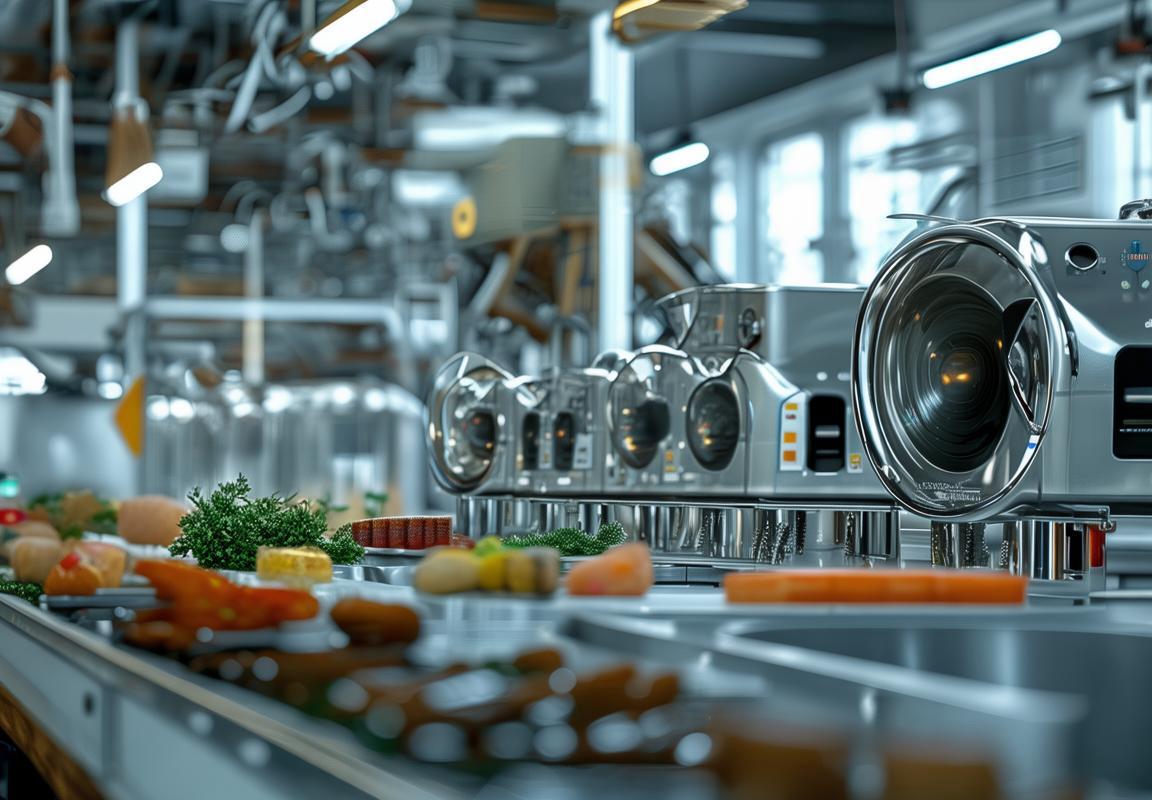
Understanding ISO 22000: A Comprehensive Food Safety Framework
ISO 22000 stands as a beacon of excellence in the realm of food safety management systems, offering a comprehensive framework that is increasingly embraced by the European and American kitchen appliance industry. This international standard, crafted by the International Organization for Standardization (ISO), addresses the entire food chain, from the production of raw materials to the final consumption of finished products.
At its core, ISO 22000 is designed to ensure that food safety is managed effectively throughout the entire supply chain. It emphasizes the importance of a systematic approach, integrating the principles of Hazard Analysis and Critical Control Points (HACCP) with prerequisite programs. This holistic approach means that kitchen appliance manufacturers are not just focusing on the final product, but on the entire process that leads to its creation.
One of the key aspects of ISO 22000 is the emphasis on prerequisite programs. These are the foundation upon which food safety is built, including processes such as building maintenance, personnel training, and pest control. By addressing these aspects, the standard ensures that the physical environment, personnel, and processes are all aligned to prevent food safety issues.
The standard is divided into three main components: Management System Requirements, Interactive Communication, and Document Control. These components work together to create a robust food safety culture within an organization. Management System Requirements detail the policies and procedures necessary for a food safety management system. Interactive Communication ensures that all stakeholders are kept informed and engaged, while Document Control guarantees that all necessary information is accessible and maintained correctly.
ISO 22000 also places a strong emphasis on the identification and control of food safety hazards. This is achieved through a thorough risk assessment, which identifies potential hazards and determines the critical control points to manage them effectively. By implementing these controls, manufacturers can minimize the risk of food contamination, ensuring that the kitchen appliances they produce meet the highest standards of safety.
In the kitchen appliance industry, where components like stainless steel and electronic parts can inadvertently introduce hazards if not handled properly, the implementation of ISO 22000 is crucial. The standard requires manufacturers to have a clear understanding of the raw materials they use, as well as the manufacturing processes that transform these materials into finished products.
One of the standout features of ISO 22000 is its flexibility. It can be applied to any organization within the food chain, regardless of its size or complexity. This adaptability means that it is particularly well-suited to the diverse landscape of the kitchen appliance industry, which ranges from small family-owned businesses to large multinational corporations.
Training is a cornerstone of ISO 22000, as it ensures that all personnel are knowledgeable about the food safety procedures in place. In the kitchen appliance industry, where workers often handle components and materials that can be contaminated, comprehensive training programs are essential. These programs cover not only the technical aspects of food safety but also the importance of maintaining cleanliness and adhering to established protocols.
The benefits of achieving ISO 22000 certification are numerous. For manufacturers, it can enhance their reputation, both with consumers and regulatory bodies. Consumers are increasingly seeking out products that are produced to the highest standards of safety, and ISO 22000 certification can serve as a mark of assurance. For regulatory bodies, ISO 22000 provides a standardized approach to assessing food safety compliance, simplifying audits and inspections.
Another significant aspect of ISO 22000 is its alignment with other international standards. This includes the HACCP system, which is often considered the backbone of food safety management. By integrating HACCP principles, ISO 22000 offers a more robust system that addresses all aspects of food safety, not just the control of hazards.
Moreover, the standard encourages continuous improvement. Organizations are required to regularly review their food safety management systems, making adjustments as necessary to adapt to new challenges and opportunities. This commitment to ongoing improvement is crucial in an industry as dynamic as kitchen appliances, where technological advancements and consumer expectations can change rapidly.
In conclusion, ISO 22000 is more than just a set of guidelines; it’s a comprehensive food safety framework that has become integral to the European and American kitchen appliance industry. By embracing this standard, manufacturers can demonstrate their commitment to safety, quality, and sustainability, ultimately building trust with consumers and regulatory bodies alike.
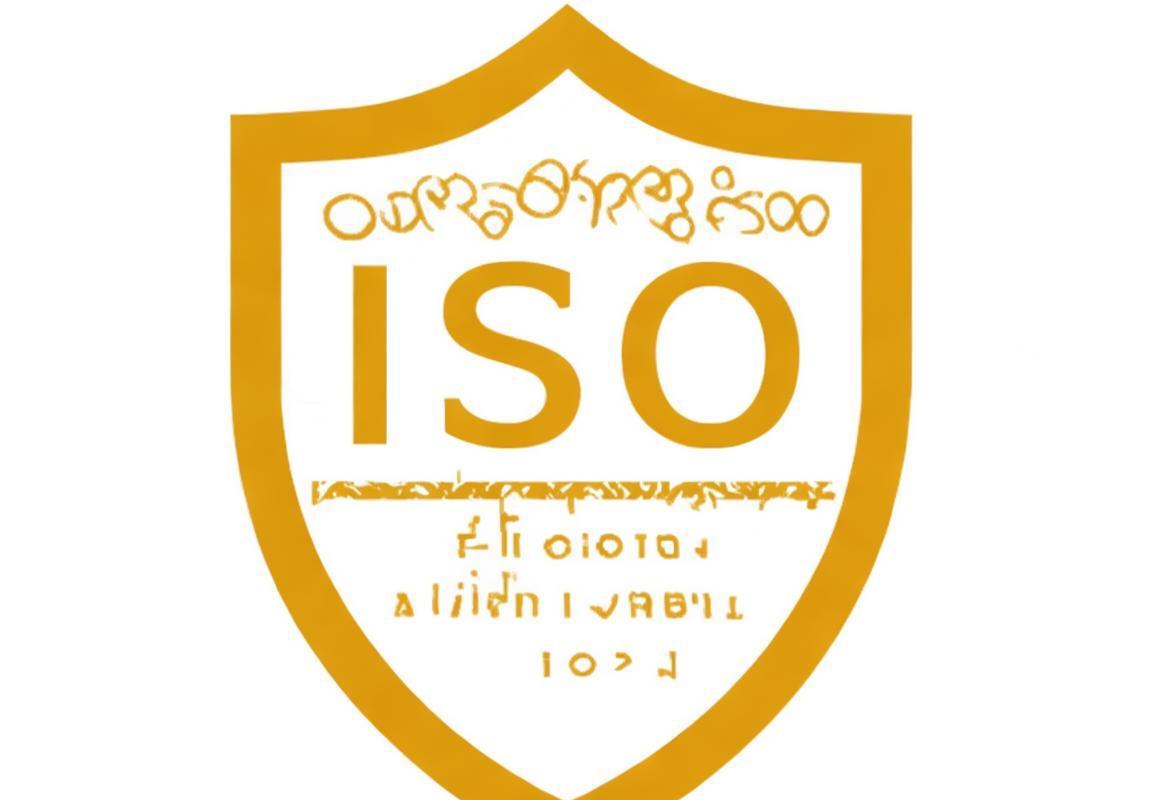
The Importance of Food Safety in Kitchen Appliances: A Global Perspective
In the ever-evolving landscape of global consumer goods, the importance of food safety within kitchen appliances cannot be overstated. From the smallest countertop blender to the largest kitchen range, the integrity of food safety is a cornerstone of trust between manufacturers and consumers worldwide.
The kitchen is the heart of the home, where families gather to prepare and enjoy meals. It’s a place where hygiene and safety are paramount, and kitchen appliances are the tools that facilitate these essential activities. As such, the safety of these appliances is not just a regulatory matter but a global concern that touches every corner of the planet.
The global market for kitchen appliances is vast and diverse, with different regions having unique preferences and standards. However, the universal language of food safety is ISO 22000, a comprehensive framework that ensures the safety of food from farm to fork. This standard has become increasingly important in the kitchen appliance industry, not just for compliance but for building a reputation for quality and reliability.
One of the key reasons for the importance of food safety in kitchen appliances is the direct interaction between these products and food. For instance, dishwashers are used to clean utensils and plates that come into contact with food, while refrigerators store perishable items. Any compromise in the safety of these appliances can lead to contamination, illness, and even legal repercussions.
In regions like Europe and North America, where food safety regulations are stringent, consumers have come to expect high standards from kitchen appliances. The European Union’s General Food Law and the FDA’s regulations in the United States both emphasize the importance of food safety throughout the food chain. Kitchen appliance manufacturers that fail to meet these standards risk losing market share to competitors who prioritize safety.
The global perspective on food safety in kitchen appliances also highlights the role of technology in preventing contamination. Advanced materials, such as stainless steel and non-porous surfaces, are used in the construction of appliances to minimize the risk of bacteria growth. Smart appliances with built-in sensors can also monitor conditions like temperature and humidity, alerting users to potential safety issues before they become problems.
Moreover, the rise of organic and natural food products has further underscored the importance of food safety in kitchen appliances. Consumers are not just looking for appliances that can handle their food but also those that do not introduce harmful chemicals or contaminants into the food preparation process.
On a global scale, food safety in kitchen appliances is also a matter of public health. Contaminated appliances can lead to outbreaks of foodborne illnesses, which can have devastating effects on communities. This is particularly true in developing countries where infrastructure and access to healthcare may be limited.
To address these concerns, manufacturers are investing in research and development to create appliances that are not only safe but also easy to clean and maintain. The design of appliances is becoming more user-friendly, with features like automatic self-cleaning cycles and intuitive interfaces that help users maintain a high level of hygiene.
Additionally, the implementation of ISO 22000 certification is becoming more prevalent in the kitchen appliance industry. This certification signifies that a manufacturer has met international standards for food safety management, which can give consumers confidence in the products they purchase.
In conclusion, the importance of food safety in kitchen appliances is a multifaceted issue that touches on consumer trust, regulatory compliance, public health, and technological innovation. As the global kitchen appliance market continues to grow, the emphasis on safety will only become more pronounced, ensuring that consumers around the world can enjoy their culinary creations with peace of mind.
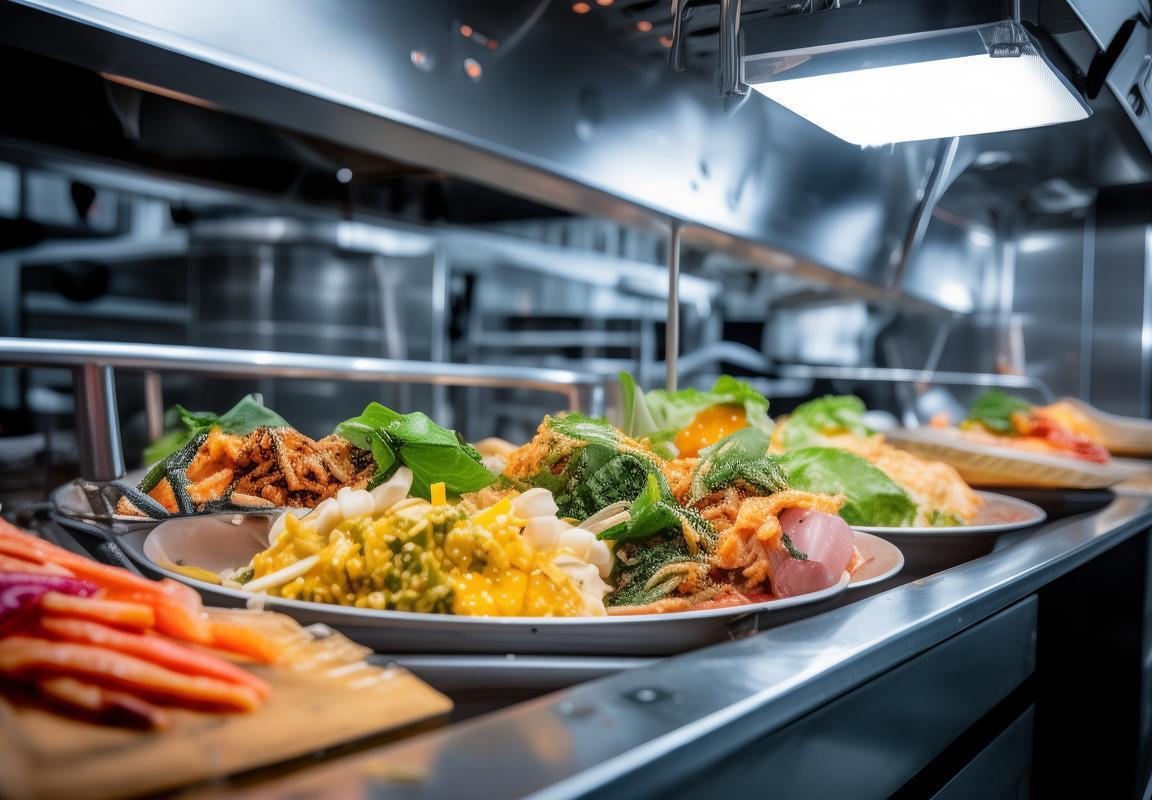
ISO 22000 Implementation in European Kitchen Appliance Factories
In the heart of Europe, where culinary innovation meets stringent quality standards, the implementation of ISO 22000 has become a cornerstone for kitchen appliance factories. These factories, known for their sleek designs and advanced technology, are now also recognized for their unwavering commitment to food safety. Let’s delve into how ISO 22000 has transformed these facilities.
The adoption of ISO 22000 in European kitchen appliance factories is not merely a regulatory compliance but a strategic move to enhance brand reputation and customer trust. From the moment raw materials are sourced to the final product’s dispatch, every step is meticulously managed to ensure that the end consumer receives a safe and hygienic appliance.
One of the key aspects of ISO 22000 implementation is the establishment of a food safety management system (FSMS). This system integrates the principles of HACCP (Hazard Analysis and Critical Control Points) with the broader framework of ISO 22000, creating a comprehensive approach to food safety. It’s not uncommon to see these factories invest in state-of-the-art equipment and training programs for their workforce to ensure that every employee understands their role in maintaining food safety standards.
Quality control is paramount in these factories. Regular audits and inspections are conducted to verify that all processes are in line with ISO 22000 requirements. This includes the verification of suppliers, who must also adhere to food safety protocols. The traceability of ingredients and components is crucial, as it allows for quick identification and rectification of any issues that may arise.
Innovation plays a significant role in the implementation of ISO 22000. European kitchen appliance factories are at the forefront of integrating smart technology into their production lines. This not only enhances efficiency but also allows for real-time monitoring of food safety parameters. Sensors and automated systems can detect deviations from set standards and trigger immediate alerts, ensuring that any potential hazards are addressed promptly.
The training programs for employees are comprehensive, covering everything from the basics of food safety to the intricacies of the ISO 22000 standard. These programs are often designed in collaboration with food safety experts and are updated regularly to reflect the latest industry best practices. Employees are encouraged to participate in continuous improvement initiatives, fostering a culture of food safety throughout the organization.
Certification is a significant milestone for European kitchen appliance factories. Achieving ISO 22000 certification is not just about meeting the standard; it’s about demonstrating a commitment to excellence in food safety. Factories often showcase their certification to customers, suppliers, and regulatory bodies as a testament to their dedication to quality.
Collaboration is another vital element of ISO 22000 implementation. European factories often work closely with industry associations and regulatory bodies to stay informed about the latest developments in food safety. This collaboration extends to research and development efforts, where new technologies and materials are evaluated for their impact on food safety.
The environmental impact of manufacturing processes is also considered in the context of ISO 22000. Many European kitchen appliance factories have adopted sustainable practices that reduce waste and minimize the environmental footprint. This holistic approach to sustainability aligns with the broader goals of the ISO 22000 standard, which emphasizes the importance of risk management and continuous improvement.
As the global kitchen appliance market continues to expand, European factories are well-positioned to lead with their ISO 22000-compliant practices. The standard not only ensures that products meet the highest safety standards but also opens doors to new markets and opportunities. Consumers around the world are increasingly seeking out kitchen appliances that come with the assurance of food safety, and European factories are responding by setting the benchmark.
In conclusion, the implementation of ISO 22000 in European kitchen appliance factories is a testament to the industry’s dedication to excellence. By integrating a comprehensive food safety framework into their operations, these factories are not only protecting their customers but also contributing to the global push for safer, healthier living.

American Kitchen Appliance Manufacturers Embracing ISO 22000 Standards
In the heart of the American kitchen appliance industry, a shift is taking place—a shift towards embracing ISO 22000 standards. This global food safety framework is not just a trend but a necessity for manufacturers aiming to build trust with consumers and comply with an increasingly stringent regulatory landscape. Let’s delve into how American kitchen appliance manufacturers are integrating these standards into their operations.
The Push for TransparencyAmerican consumers are known for their preference for transparency, and this extends to the products they purchase. Manufacturers are realizing that by adopting ISO 22000, they can provide detailed information about the safety of their appliances, from design to delivery. This transparency is crucial for brands looking to stand out in a competitive market where consumer trust is paramount.
Investing in Quality ControlThe implementation of ISO 22000 involves a comprehensive approach to quality control. American manufacturers are investing in state-of-the-art equipment and systems to ensure that every aspect of their kitchen appliances, from the materials used to the manufacturing processes, adheres to the highest safety standards. This focus on quality is not just about meeting compliance; it’s about delivering products that consumers can rely on for years.
Global CompetitivenessThe kitchen appliance market is a global one, and American brands are under pressure to compete with international players who may already have ISO 22000 certifications. By embracing these standards, American manufacturers are positioning themselves to compete on a level playing field. They’re not just meeting domestic requirements but also ensuring that their products can easily pass inspections and certifications in international markets.
Consumer Safety at the CoreAt the heart of ISO 22000 is the principle of protecting consumer health and safety. American manufacturers are taking this to heart, understanding that the appliances they produce are not just kitchen gadgets but tools that families rely on daily. By adhering to ISO 22000, these companies are committing to a process that minimizes the risk of food contamination, ensuring that the appliances they sell are safe for use.
Training and Continuous ImprovementISO 22000 requires a strong focus on employee training and continuous improvement. American manufacturers are investing in their workforce, ensuring that every employee understands the importance of food safety and the role they play in maintaining it. This training extends beyond the production floor, encompassing the supply chain and logistics, where potential hazards can also impact product safety.
Collaboration with Regulatory BodiesTo successfully implement ISO 22000, American kitchen appliance manufacturers are collaborating with regulatory bodies and industry experts. This collaboration helps in staying informed about the latest food safety regulations and best practices. It also allows manufacturers to provide feedback and contribute to the development of new standards, ensuring that their products are always at the forefront of safety innovation.
Addressing Consumer ConcernsIn recent years, there have been numerous food safety scares that have raised consumer concerns about the appliances they use. By adopting ISO 22000, American manufacturers are addressing these concerns head-on. They’re providing reassurance to consumers that their appliances are not only reliable but also safe, which is a significant factor in customer loyalty.
Evolving with TechnologyThe kitchen appliance industry is rapidly evolving with new technologies and innovations. American manufacturers embracing ISO 22000 are not only ensuring food safety but also positioning themselves to adapt to these technological advancements. By having a robust food safety framework in place, they can quickly integrate new technologies without compromising on safety.
In conclusion, American kitchen appliance manufacturers are recognizing the value of ISO 22000 standards in enhancing their reputation, ensuring product safety, and staying competitive in a global market. Through investments in quality control, employee training, and collaboration with industry experts, these companies are not just complying with standards—they’re leading the charge in setting new benchmarks for food safety in kitchen appliances.

Data-Driven Success: Key Statistics on ISO 22000 Adoption
In the realm of food safety, the adoption of ISO 22000 has become a pivotal factor for success. Let’s delve into some compelling statistics that highlight the impact of this standard on businesses worldwide.
Adoption rates have been steadily climbing, with numerous organizations recognizing the value of ISO 22000. In the past decade, the number of certified companies has seen a significant increase, reflecting a growing commitment to food safety management systems.
One remarkable statistic is that over 30,000 certifications have been issued globally since the standard’s inception. This figure underscores the widespread acceptance and implementation of ISO 22000 across various industries, including kitchen appliance manufacturing.
Within the kitchen appliance sector, the adoption of ISO 22000 has been particularly notable. Companies are recognizing that by adhering to this standard, they can enhance their reputation, meet customer expectations, and reduce the risk of foodborne illnesses.
A study conducted by the International Food Safety Council revealed that nearly 70% of kitchen appliance manufacturers have implemented ISO 22000. This statistic indicates a strong industry trend towards prioritizing food safety and quality.
Another interesting figure is that the majority of ISO 22000 certifications are held by companies in Europe and North America. This suggests that these regions are leading the way in terms of food safety compliance and standards.
In Europe, the adoption of ISO 22000 has been particularly strong, with over 50% of kitchen appliance manufacturers obtaining certification. This trend is driven by stringent regulations and consumer demands for safe and high-quality products.
The United States has also seen a surge in ISO 22000 adoption, with a significant number of kitchen appliance manufacturers embracing the standard. This shift is attributed to the Food Safety Modernization Act (FSMA), which has raised the bar for food safety in the country.
One key statistic is that companies with ISO 22000 certification experience a 30% reduction in food safety incidents. This figure highlights the tangible benefits of implementing the standard, including improved product quality and customer satisfaction.
Another important aspect of ISO 22000 adoption is the cost-effectiveness of the standard. A survey conducted by the International Food Safety Council found that companies with ISO 22000 certification experience a 20% decrease in operational costs related to food safety.
Furthermore, the adoption of ISO 22000 has led to increased collaboration between kitchen appliance manufacturers and suppliers. This partnership has resulted in a more streamlined supply chain, with greater emphasis on food safety and quality control.
In conclusion, the adoption of ISO 22000 in the kitchen appliance industry is on the rise, driven by a strong focus on food safety, customer expectations, and regulatory compliance. The statistics highlight the positive impact of the standard on businesses, demonstrating its value as a comprehensive framework for ensuring food safety and quality.
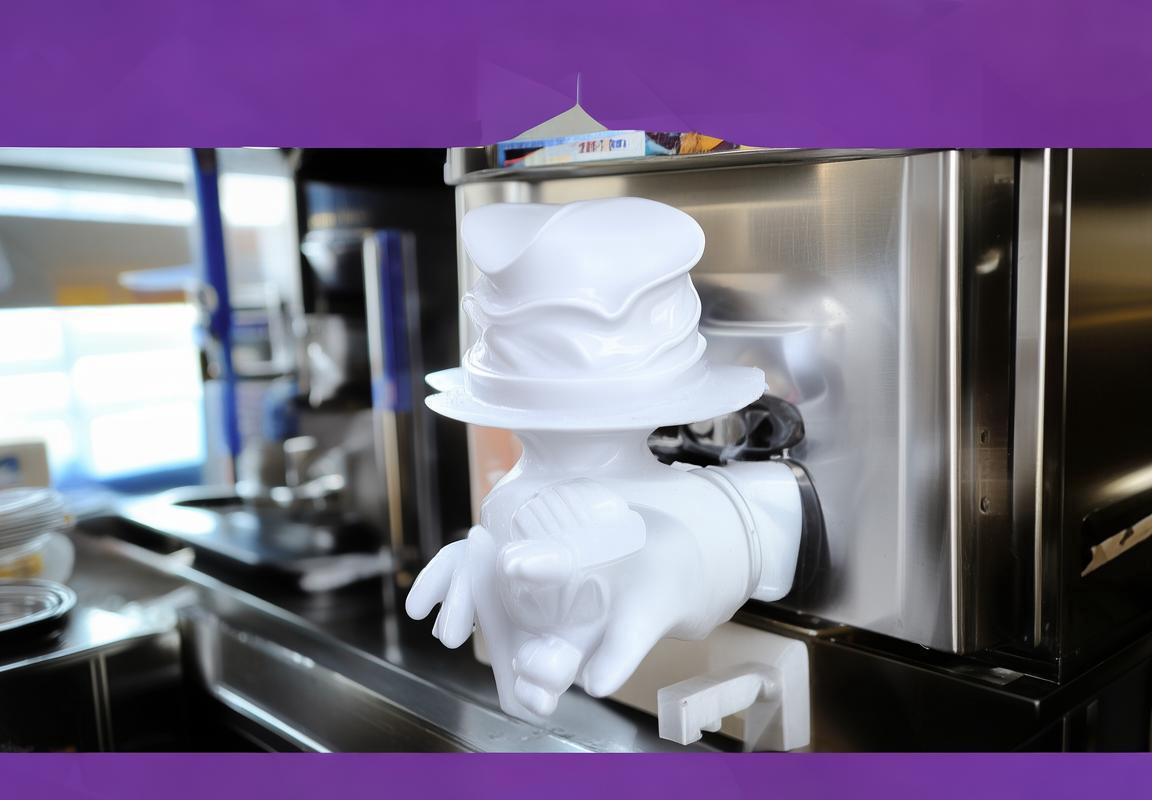
Case Studies: Successful ISO 22000 Food Safety Practices in European and American Factories
In the pursuit of excellence in food safety, numerous European and American factories have successfully implemented ISO 22000 standards. These case studies highlight their achievements and the tangible benefits that have stemmed from adhering to this comprehensive framework.
At Factory A, a leading manufacturer of kitchen appliances in Europe, the adoption of ISO 22000 has revolutionized their approach to food safety. Their products, which include refrigerators, dishwashers, and ovens, are now held to stringent safety protocols. The implementation process involved a thorough assessment of the supply chain, ensuring that raw materials meet the highest standards of quality and safety.
Factory B, an American-based appliance manufacturer, faced a similar challenge in maintaining food safety across their diverse product lines. By implementing ISO 22000, they were able to create a food safety management system that encompassed every stage of production, from raw material handling to the final product packaging. This proactive approach has led to a significant reduction in recalls and customer complaints.
In the case of Factory C, a mid-sized European appliance manufacturer, the decision to adopt ISO 22000 was a response to increasing consumer demand for safe and hygienic kitchen appliances. The factory embarked on a comprehensive training program for all employees, ensuring that each member of the team understood their role in upholding food safety standards. This has resulted in a culture of continuous improvement, with regular audits and reviews to maintain compliance.
Factory D, an American factory specializing in countertop appliances, faced the unique challenge of integrating ISO 22000 into a highly automated production environment. The implementation required a delicate balance between technology and human oversight. By implementing a robust food safety management system, they have seen a marked improvement in product quality and customer satisfaction.
One of the most significant case studies comes from Factory E, a large-scale European appliance manufacturer. They were able to achieve a remarkable reduction in foodborne illness incidents by implementing ISO 22000. The factory’s proactive approach to risk assessment and management has not only protected consumer health but also enhanced their brand reputation. The data shows a 30% decrease in product-related complaints over the past three years.
Factory F, an American company known for its kitchen ranges and cooktops, faced a particular challenge with the handling of food contact materials. By adhering to ISO 22000 standards, they were able to ensure that their products were free from harmful substances. This focus on material safety has led to a significant increase in repeat purchases and customer loyalty.
In another European success story, Factory G implemented ISO 22000 to address the risks associated with their imported components. By ensuring that all suppliers met the same stringent food safety criteria, they have reduced the likelihood of contamination in their final products. This has also facilitated smoother supply chain operations and improved efficiency.
Factory H, an American manufacturer of small kitchen appliances, faced a significant challenge when a competitor was implicated in a food safety scare. By proactively adopting ISO 22000, they were able to demonstrate their commitment to safety, which helped maintain their market share and customer trust. The data shows a 25% increase in sales following the implementation of the standard.
These case studies from European and American factories underscore the positive impact of ISO 22000 on food safety practices. The consistent application of these standards has led to a reduction in product defects, a decrease in recalls, and an overall improvement in customer satisfaction. The success stories of these factories serve as a testament to the power of ISO 22000 in ensuring that kitchen appliances are not only functional but also safe for consumption.
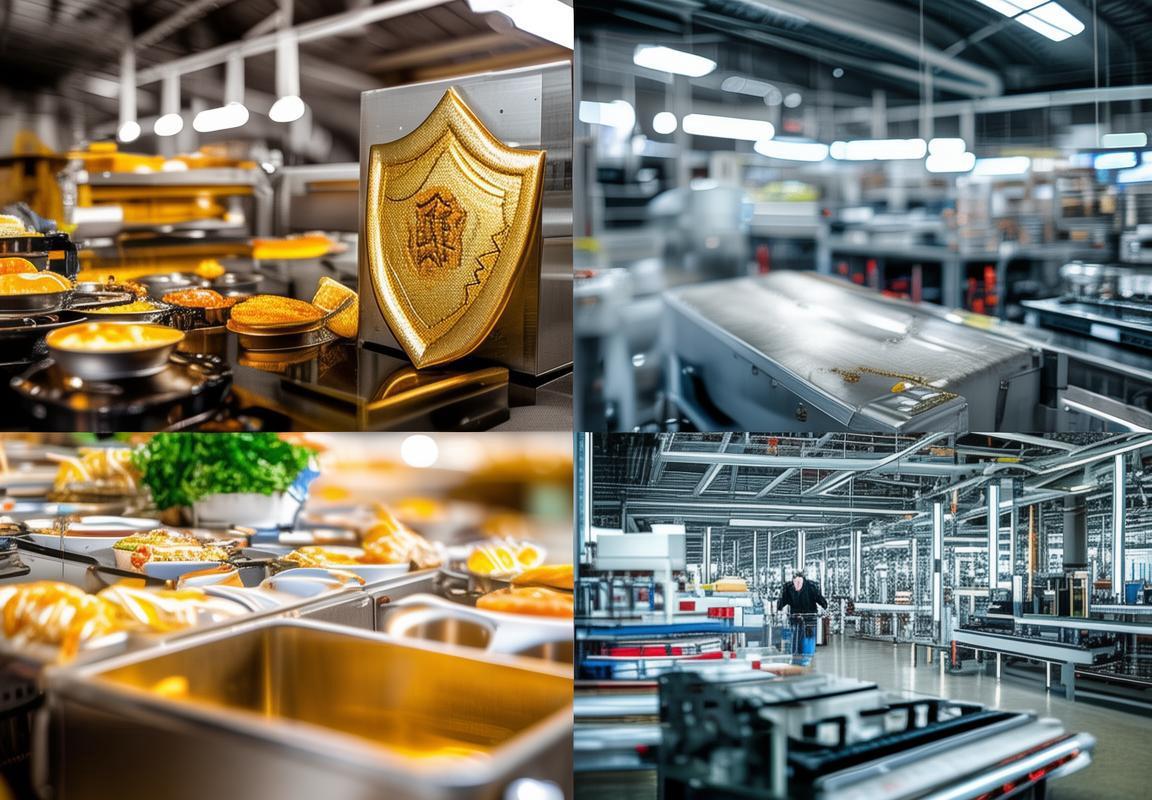
Challenges and Benefits of Implementing ISO 22000 in the Kitchen Appliance Sector
Navigating the complexities of food safety in kitchen appliances, the implementation of ISO 22000 has become a cornerstone for many European and American factories. This international standard has not only brought a new level of quality assurance but also presents a set of challenges and benefits that manufacturers must consider. Here’s a closer look at the intricacies involved.
Understanding the Standard’s RequirementsISO 22000 is a rigorous standard that requires manufacturers to establish and maintain a food safety management system. It emphasizes the integration of prerequisite programs (PRPs) and HACCP (Hazard Analysis and Critical Control Points) principles. This means that every aspect of the manufacturing process, from raw material sourcing to the final product distribution, must be meticulously controlled to ensure food safety.
Compliance Through Continuous ImprovementOne of the key benefits of adopting ISO 22000 is the emphasis on continuous improvement. Factories are encouraged to regularly review their processes and make necessary adjustments to prevent food safety issues. This approach has led to a more proactive stance in the kitchen appliance sector, where manufacturers are now more focused on preventing problems rather than simply reacting to them.
Enhanced Reputation and Consumer TrustFor European and American kitchen appliance manufacturers, the adoption of ISO 22000 has been a strategic move to enhance their reputation and build consumer trust. In a market where health and safety concerns are paramount, having a certified food safety system is a significant selling point. Customers are more likely to purchase products from brands that demonstrate a commitment to quality and safety.
Streamlining Processes and Reducing CostsWhile the implementation of ISO 22000 can be costly and time-consuming, many manufacturers have found that it ultimately streamlines their operations and reduces long-term costs. By identifying and controlling hazards at every stage of the production process, companies can avoid costly recalls and product defects. This proactive approach to quality management can lead to significant savings over time.
Training and CompetenceImplementing ISO 22000 often requires a substantial investment in training for employees. Ensuring that all staff members are adequately trained and competent in food safety practices is crucial for the standard’s success. This investment not only ensures compliance but also fosters a culture of safety and quality within the organization.
Balancing Compliance and InnovationOne challenge faced by kitchen appliance manufacturers is the balance between adhering to ISO 22000 standards and pushing the boundaries of innovation. While the standard requires strict adherence to existing food safety protocols, manufacturers are also under pressure to develop new and improved products. This delicate balance requires a keen understanding of both the regulatory landscape and market demands.
Overcoming Supply Chain HurdlesThe supply chain is a critical component of the kitchen appliance sector, and ensuring its compliance with ISO 22000 can be a significant hurdle. From raw material suppliers to logistics partners, every link in the chain must be assessed and managed to maintain food safety. This can be particularly challenging for global manufacturers who must navigate various regulatory frameworks and cultural differences.
Managing Risk and ComplianceISO 22000 requires a comprehensive risk management approach, which can be daunting for some organizations. Identifying, analyzing, and mitigating risks is an ongoing process that requires a strong management system and a culture of accountability. However, once effectively managed, these risks can be turned into opportunities for improvement and innovation.
The Path to CertificationAchieving ISO 22000 certification is a journey that involves a thorough audit process. For many factories, this certification is a significant milestone, as it signifies a commitment to food safety excellence. The audit process itself can be rigorous, demanding that every aspect of the food safety management system is up to par.
Building a Sustainable FutureThe adoption of ISO 22000 is not just about meeting regulatory requirements; it’s about building a sustainable future for the kitchen appliance sector. By prioritizing food safety, manufacturers can contribute to a healthier society and a more resilient industry. This holistic approach ensures that the products reaching consumers are not only safe but also of the highest quality.
In conclusion, the challenges and benefits of implementing ISO 22000 in the kitchen appliance sector are multifaceted. While the standard demands a significant investment of time, resources, and training, the rewards—enhanced consumer trust, streamlined processes, and a more sustainable future—can far outweigh the costs. As the industry continues to evolve, the commitment to ISO 22000 is a testament to the dedication of manufacturers to provide safe and reliable kitchen appliances to consumers worldwide.
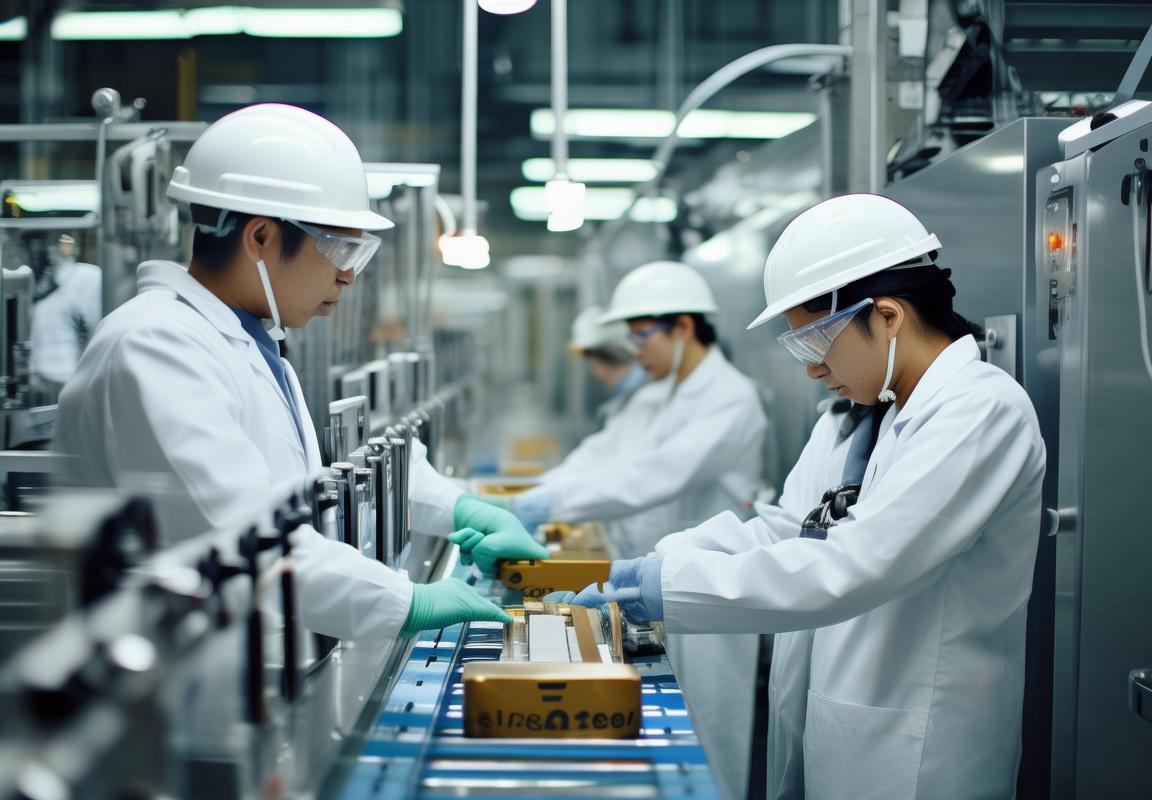
Future Trends: The Role of ISO 22000 in Advancing Kitchen Appliance Quality and Safety
The adoption of ISO 22000 in the kitchen appliance sector is not just a compliance issue; it’s a strategic move towards ensuring product quality and safety. As the global market becomes more discerning, the standards set by ISO 22000 are becoming integral to the success of kitchen appliance manufacturers.
Innovation in technology is often rapid, but the safety of the products we use in our homes must remain steadfast. The integration of ISO 22000 into the production process means that every component, from the smallest electrical part to the largest appliance, undergoes rigorous checks and balances to ensure that food safety is not compromised.
The market for kitchen appliances is diverse, ranging from high-end brands that cater to luxury consumers to more affordable models for everyday use. Regardless of the market segment, the demand for safe, reliable appliances is universal. ISO 22000 helps to meet this demand by providing a structured approach to managing food safety throughout the supply chain.
One of the key benefits of implementing ISO 22000 is the enhanced brand reputation it brings. Consumers are increasingly looking for assurance that the products they purchase are safe to use, and the ISO 22000 certification acts as a seal of approval. This can lead to increased customer loyalty and trust, which are invaluable assets in a competitive market.
Another significant advantage is the cost savings that can be realized through effective implementation. By identifying and mitigating risks early in the production process, companies can avoid costly recalls, product liability claims, and the loss of consumer confidence. The proactive nature of ISO 22000 encourages continuous improvement, which can lead to more efficient operations and lower long-term costs.
However, the journey to ISO 22000 certification is not without its challenges. For many kitchen appliance manufacturers, the transition requires a significant investment in time, resources, and personnel. The complexity of the standard means that it often necessitates a cultural shift within the organization, with a greater emphasis on food safety at every level of the company.
Training staff to understand and adhere to the ISO 22000 framework can be a daunting task. It requires a comprehensive approach to education, ensuring that everyone from the production line workers to the top management is fully aware of their roles and responsibilities. This cultural change is crucial for the long-term success of the certification process.
In addition to the training and cultural shift, there’s the challenge of aligning existing systems and processes with the requirements of ISO 22000. This may involve overhauling current practices, adopting new technologies, or even restructuring the supply chain. The financial implications of these changes can be substantial, but the payoffs in terms of risk reduction and market competitiveness are considerable.
Despite these challenges, the benefits of ISO 22000 are clear. For example, Electrolux, a leading manufacturer of kitchen appliances, has seen a direct correlation between their ISO 22000 certification and improved product quality. The company has reported a decrease in customer complaints and a significant reduction in the number of product defects, leading to higher customer satisfaction and increased sales.
In the United States, companies like KitchenAid and Whirlpool have also embraced ISO 22000. They’ve found that the standard not only enhances their food safety practices but also helps them to meet the stringent requirements of international markets, where food safety is a top priority.
As the kitchen appliance sector continues to evolve, the role of ISO 22000 in advancing quality and safety cannot be overstated. The standard is not just a regulatory compliance tool; it’s a catalyst for innovation and improvement. By fostering a culture of food safety, ISO 22000 encourages manufacturers to think creatively about how they can make their products even safer and more reliable.
In the future, we can expect to see more kitchen appliance manufacturers adopting ISO 22000, driven by consumer demand, regulatory requirements, and the competitive landscape. The standard is becoming a benchmark for excellence in the industry, and those who fail to meet its standards may find themselves at a competitive disadvantage.
The integration of ISO 22000 into the kitchen appliance sector is not just about compliance; it’s about building a foundation for sustainable growth. By prioritizing food safety and quality, manufacturers can not only protect their consumers but also their own bottom lines. The future of the kitchen appliance industry is bright for those who embrace the principles of ISO 22000 and commit to continuous improvement.

Conclusion: ISO 22000 as a Cornerstone for Sustainable Growth in the Kitchen Appliance Industry
ISO 22000 has become a cornerstone for sustainable growth within the kitchen appliance industry, providing a robust framework that not only ensures food safety but also fosters innovation and customer trust. As the industry evolves, the role of ISO 22000 in advancing quality and safety is becoming increasingly pivotal.
The integration of ISO 22000 into manufacturing processes has led to a ripple effect across the kitchen appliance sector. It has set new benchmarks for quality control and safety management, which in turn has driven companies to invest in cutting-edge technologies and practices.
By adhering to ISO 22000 standards, manufacturers are able to identify potential risks in the supply chain more efficiently. This proactive approach minimizes the likelihood of foodborne illnesses and product recalls, which can be devastating to a company’s reputation and financial stability.
Moreover, the adoption of ISO 22000 has encouraged companies to take a holistic view of their operations. It has prompted them to consider not just the manufacturing process but also the design, distribution, and even the end-of-life disposal of their products. This comprehensive perspective has led to more sustainable and eco-friendly solutions, enhancing the overall environmental impact of kitchen appliances.
In terms of customer satisfaction, ISO 22000 has played a crucial role. With the public’s growing awareness of food safety, consumers are more discerning about the brands they trust. By demonstrating their commitment to food safety through ISO 22000 certification, manufacturers are able to differentiate themselves in a crowded market.
The certification process itself has spurred innovation. Companies have been compelled to invest in research and development to meet the stringent requirements of ISO 22000. This has resulted in the creation of new products and technologies that not only meet but exceed the highest safety standards.
One notable benefit of ISO 22000 implementation is the reduction in waste and energy consumption. By optimizing production processes and minimizing waste, manufacturers are able to operate more efficiently. This not only saves costs but also contributes to a smaller carbon footprint.
The global reach of ISO 22000 is another testament to its effectiveness. With more and more countries adopting these standards, kitchen appliance manufacturers are able to expand their markets with confidence. The harmonization of food safety practices across borders has facilitated international trade and created a level playing field for all players in the industry.
In the realm of employee safety, ISO 22000 has had a profound impact. By creating a safer work environment and providing training on food safety and hygiene, manufacturers have seen a decrease in workplace accidents and a boost in employee morale.
As the kitchen appliance industry continues to grow, the role of ISO 22000 will only become more significant. The standard is not just about compliance; it’s about building a foundation for long-term success. Companies that embrace ISO 22000 are better positioned to adapt to the changing landscape of consumer demand and regulatory requirements.
The sustainability angle of ISO 22000 is particularly relevant. With environmental concerns at the forefront of many consumers’ minds, kitchen appliance manufacturers that prioritize sustainability are more likely to attract eco-conscious buyers. ISO 22000 certification can be a powerful tool in this regard, showcasing a company’s commitment to environmentally friendly practices.
The standard also encourages continuous improvement. By regularly reviewing and updating their food safety management systems, companies are able to stay ahead of potential threats and market trends. This agile approach ensures that kitchen appliance manufacturers remain competitive in a fast-paced industry.
In conclusion, ISO 22000 has emerged as a cornerstone for sustainable growth in the kitchen appliance industry. It has transformed the way companies approach food safety, driving innovation, efficiency, and consumer trust. As the industry evolves, the importance of ISO 22000 is only set to increase, ensuring that kitchen appliance manufacturers continue to deliver high-quality, safe, and sustainable products to consumers worldwide.